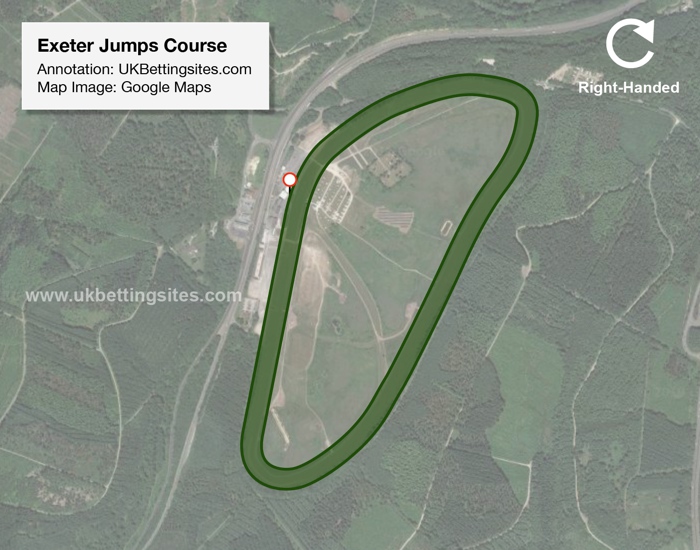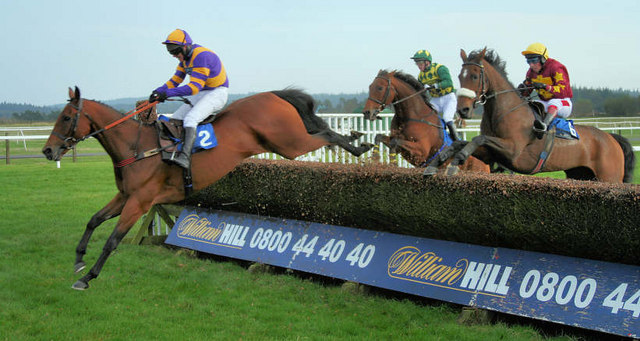Exeter Racecourse

Locally known as Haldon racecourse due to being located at the top of the Haldon Hills, Exeter racecourse is officially the highest track in Britain, positioned 850ft above sea level. Surrounded by beautiful hills and picturesque local scenery, the course was officially known as Devon and Exeter racecourse until being changed in the early 1990s. Racing was first staged at Exeter during the reign of King Charles II, with the first official Jockey Club meeting taking place in 1769. On the 1st November 2005, famous racehorse and triple Cheltenham Gold Cup winner, Best Mate, tragically died of a suspected heart attack during the Haldon Gold Cup.
Exeter has very good transport connections, located just five miles from the end of the M5 and clearly signposted from all directions on race days. With free parking for all customers, race goers are encouraged to drive, as the train station is a 25-minute taxi journey from the racecourse. Having said that, the train remains an option, the course being just two hours from London Paddington, and a free race day bus service is in operation to take visitors to and from the station.
Ticket Prices
With the option for upgrading to the premier enclosure for an increase in price, entry to the grandstand is priced at between £10 and £20 depending on the race day. Exeter is very welcoming of disabled customers, with a lift in the Brockman Building providing access for wheelchair users to view the racing in a covered seating area. Specialised toilets are available in the grandstand and adjoining buildings, with guide dogs very welcome for those customers who require their use.
The Course

Exclusively a National Hunt course, Exeter is closed each year between the months of May and October, operating only during the traditional jumps season. Its right-handed oval circuit measures two miles around, making it the longest course in the country.
It’s also the highest in the land at 850 feet above sea level, situated on the top of Haldon Hill. Unsurprisingly given its location, the course features lots of undulations but there are also long and graceful bends around the track making this one for the gallopers. The back straight of the course features a steep descent followed by a challenging uphill, with the rest of the course reasonably hilly, as well.
The steeplechase track at Exeter has 11 fences, whilst the hurdles course features seven flights, with the distance between the final hurdle and the finishing post measuring at 1f. The jumps track at Exeter is said to be a good educational course for young horses and inexperienced jockeys, as despite having relatively easy fences, the uneven distribution makes the thought behind approaching them and tactical perspective a good challenge.
A Course of Two Extremes
In the heart of winter, things can get incredibly muddy at Exeter, in part due to its high-up location on Haldon Hill. At such times, the emphasis is most definitely on stamina, particularly in long races, such as the 3m 6½f Devon National Handicap Chase.
Although there is no racing here in the summer months, Exeter isn’t a stranger to fast ground either though, partly due to the absence of an artificial watering system. With such a vast landscape to cover, it doesn’t appear feasible to have one installed.
Very slick ground is not something as commonly spotted at Exeter as it once was though. Conditions hold better than before and most of the time you’ll find jockeys praising how smooth it is to ride, even on novice chasers. It is thought to be one of the fairest and best National Hunt courses around now.
This is perhaps part of the reason why there’s been shift towards better quality racing here in more recent years. A hit among jockeys and trainers alike, racegoers too are regularly impressed by this aesthetically pleasing course.
Carlisle & Leicester Show Similarities
For horses that put in a good shift at Exeter, they could well end up taking well to the challenge offered at Carlisle and Leicester. The pair are both right handed tracks, offering undulations throughout and ending with a stiff uphill finish.
They are both also known for having extremely testing conditions during the wetter months too – something Exeter is also familiar with. Leicester perhaps offers a tougher jumping test during chases even after recent adjustments but the obstacles at Carlisle are certainly no trickier than those offered here.
Major Meetings at Exeter

Arguably the most prestigious race at Exeter each year is the Haldon Gold Cup, which was impressively won by Trovado for three consecutive years from 1993. Run every year in late October/early November, the 2m 1½f race became a limited handicap race in 1996, the same year William Hill became sponsor. There have been a number of sponsor changes since then with the most recent race being sponsored by BetVictor.
Dining and Hospitality

The menu at the Desert Orchid restaurant at Exeter racecourse is priced at just £69 per person, with the conference centre available to hire throughout the year on non-race days for functions such as business conferences, private parties and weddings.